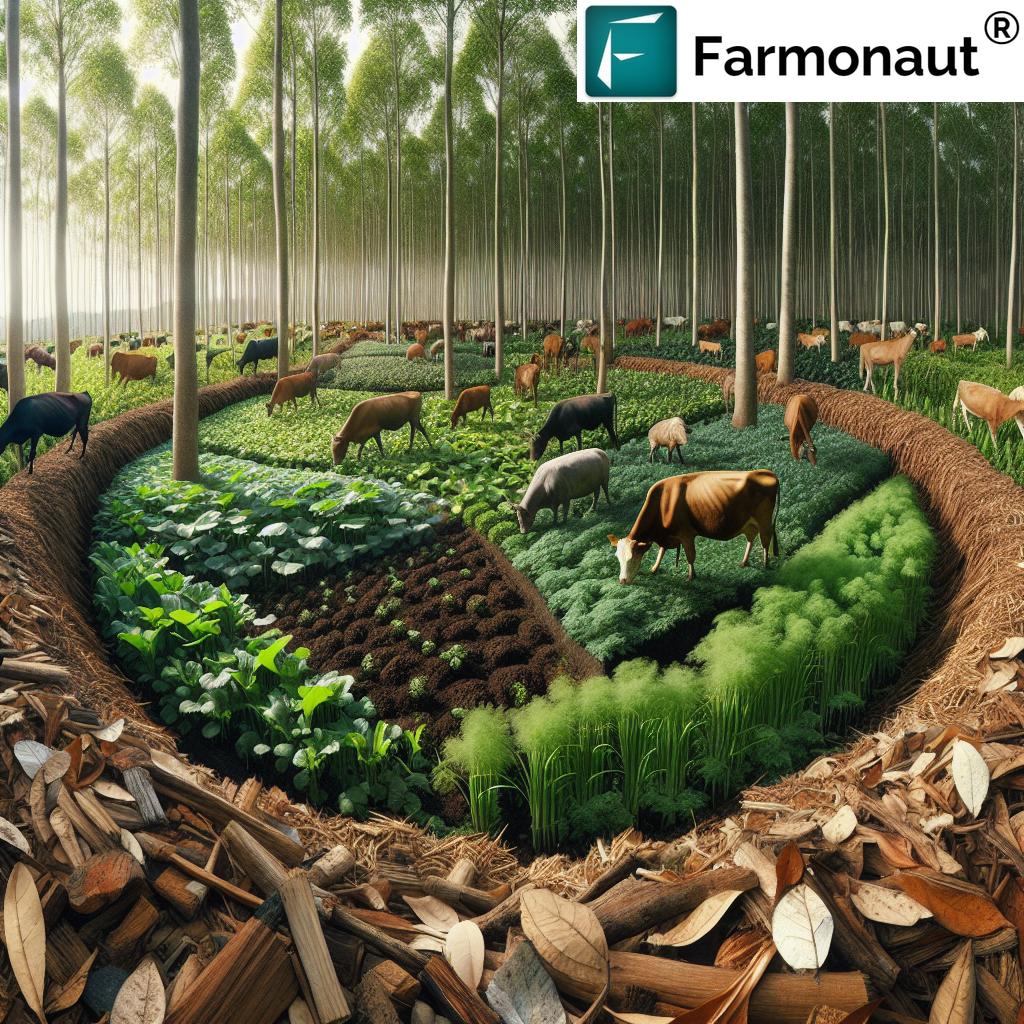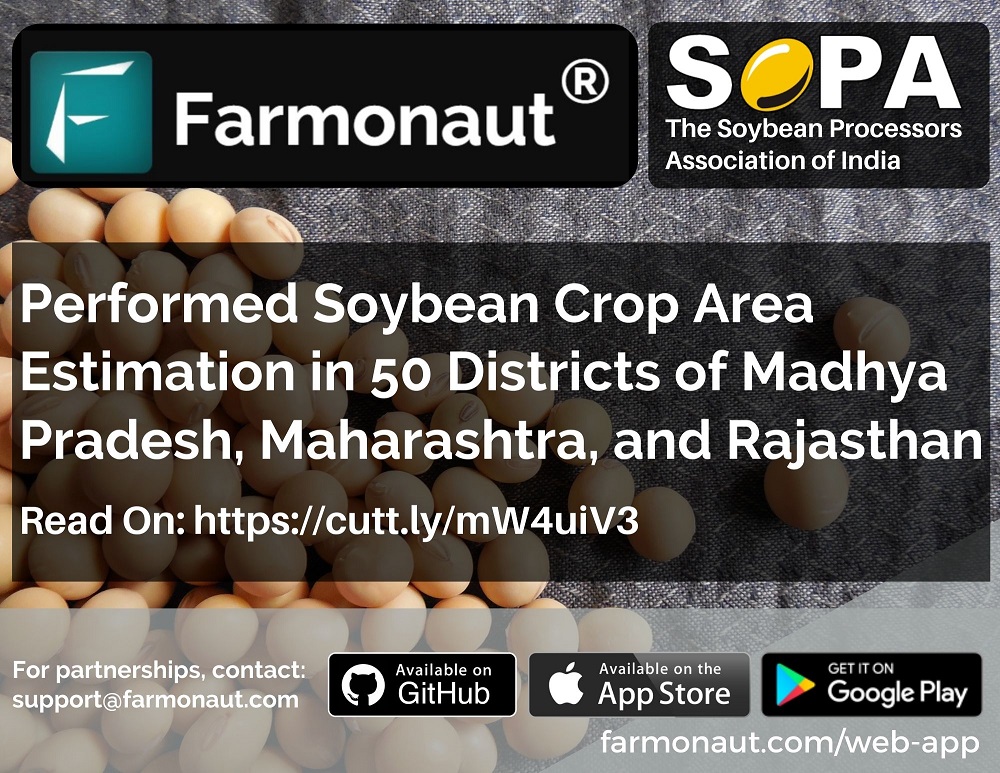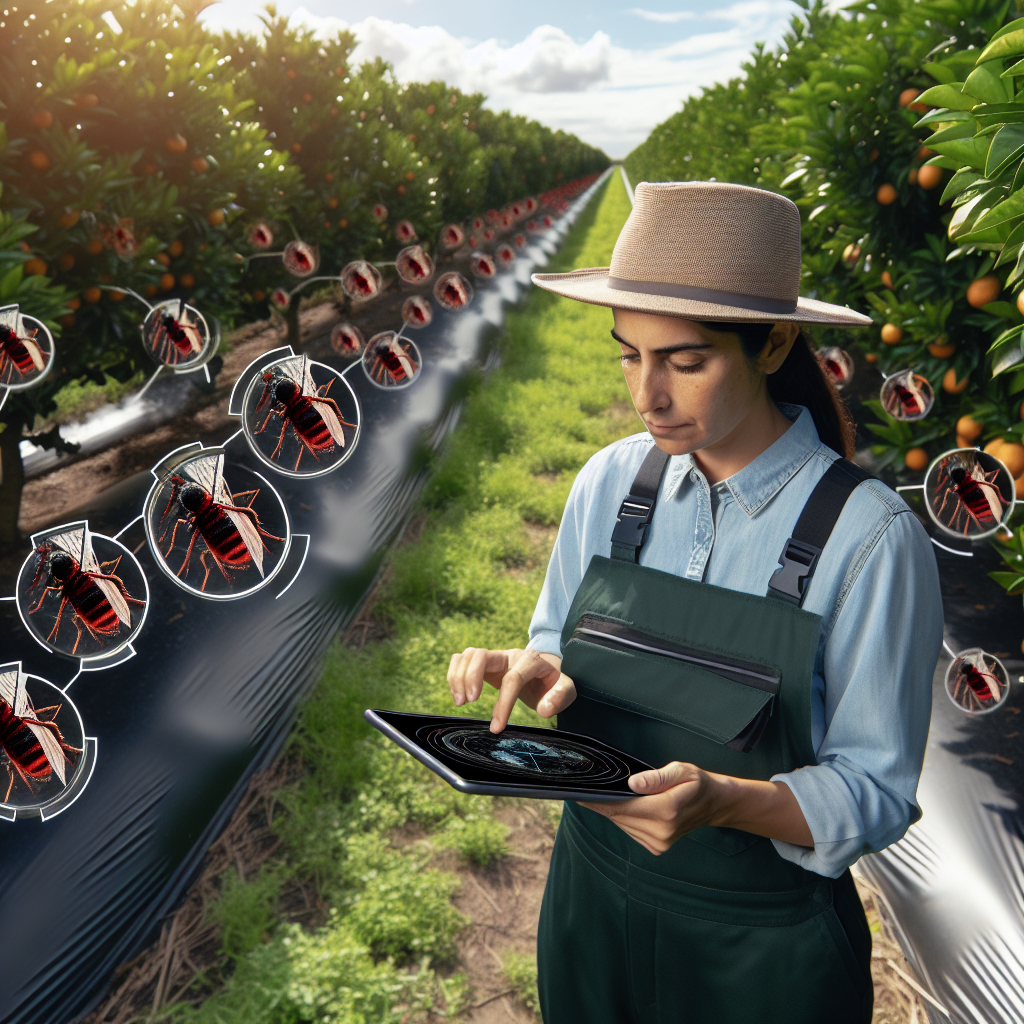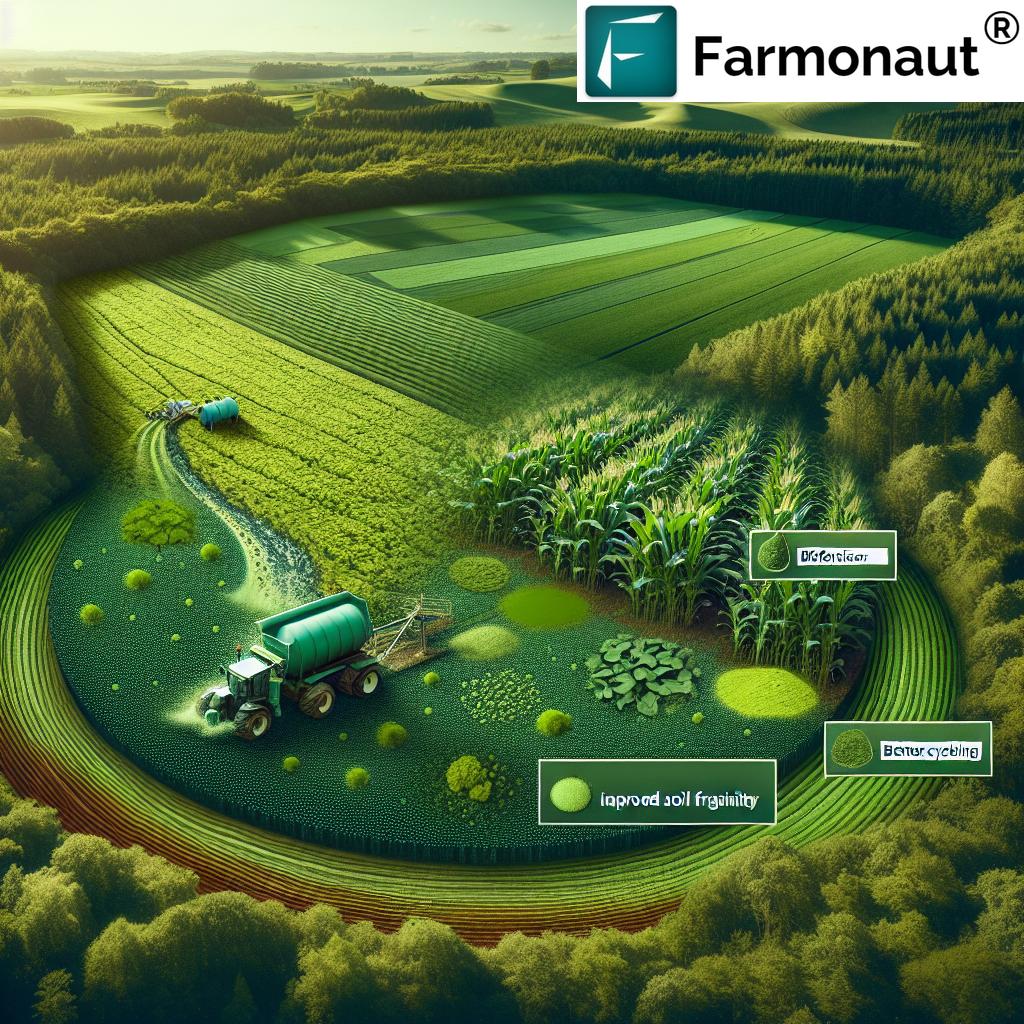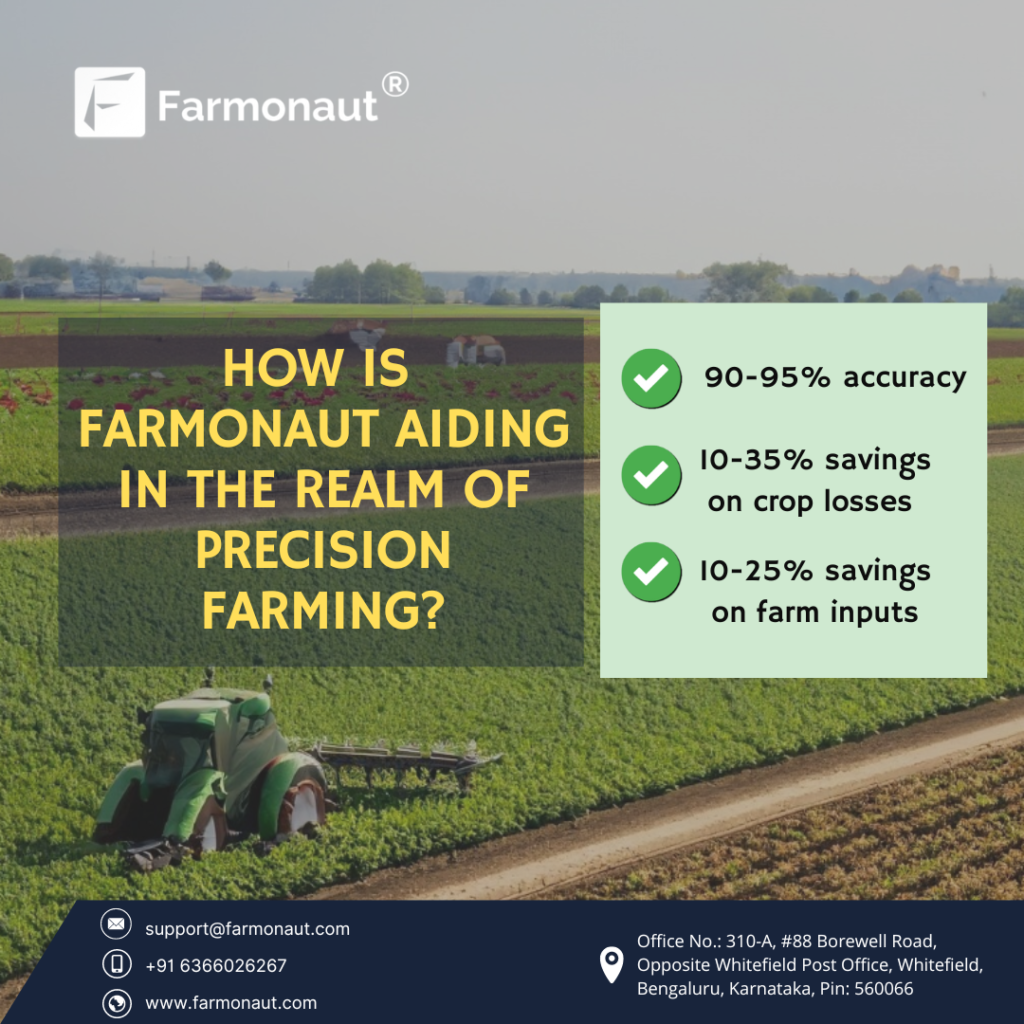Table of Contents
- Introduction to Circular Farming
- Key Principles of Circular Farming
- Circular Farming Practices: 7 Ways to Boost Soil Health
- Comparative Table: Circular Practices Impact
- Benefits of Circular Farming
- Challenges & Considerations
- Technology & Tools for Circular Farming
- Farmonaut: Powering Sustainable Agriculture Systems
- FAQ on Circular Farming Practices
- Conclusion: Building Resilient, Sustainable Agriculture Systems
“Circular farming can increase soil organic matter by up to 58% compared to conventional methods.”
Circular Farming Practices: 7 Ways to Boost Soil Health
As we strive for greater sustainability and innovation in agriculture, circular farming practices have emerged as a game-changing approach. By emphasizing closed-loop systems, regenerative soil health, and robust biodiversity in agriculture, these practices pave the way for a future where farming activities harmonize with the environment. In this comprehensive guide, we’ll uncover the essential strategies, technologies, and real-world benefits of adopting circular farming, especially for those looking to increase soil health and fertility, optimize nutrient cycling in farming, and build true resilience in their agroecosystems.
By integrating principles such as resource efficiency, nutrient recycling, soil regeneration, and waste minimization in farming, circular systems offer an antidote to the challenges faced by modern agriculture. Whether you’re a smallholder, large-scale agribusiness, or policymaker, understanding these sustainable agriculture systems is key to transforming productivity and environmental outcomes.
Understanding Circular Farming: Principles for Sustainable Agriculture
At its core, circular farming involves designing agricultural systems that go beyond traditional, linear models. Instead of importing massive amounts of external inputs and exporting both products and waste, we focus on closing the loop — mimicking how natural ecosystems function. In conventional agriculture, practices often depend on chemical fertilizers, synthetic pesticides, and monocropping methods that can eventually degrade soil health, reduce biodiversity, and diminish system resilience.
Circular farming practices emphasize the following core principles:
- Resource Efficiency: Maximize on-farm resource use and minimize reliance on costly, external inputs.
- Nutrient Cycling in Farming: Ensure that all available nutrients are efficiently recycled, reducing the need for purchased synthetic fertilizers and preserving natural soil health.
- Soil Regeneration: Implement methods that restore depleted soils, boost microbial life, and increase soil fertility.
- Biodiversity Enhancement: Foster a variety of species (crops, livestock, trees, beneficial insects), promoting ecosystem stability and resilience to pests and disease.
- Waste Minimization in Farming: Reduce, recycle, and reuse organic and inorganic waste on-site, with effective composting and innovative reusing materials techniques.
Through these principles, we can design agricultural landscapes that enhance productivity, safeguard the environment, and support farmer livelihoods for generations to come.
Circular Farming Practices: 7 Ways to Boost Soil Health and Fertility
Let’s explore seven circular farming practices that are proven to improve soil health, enhance nutrient cycling, promote biodiversity in agriculture, and reinforce farm resilience. By adopting one or more of these methods, we can radically transform our approach to sustainable agriculture.
1. Organic Farming Methods: Building Soil Rather Than Depleting It
Organic farming methods reject the use of synthetic fertilizers and harsh pesticides. Instead, we focus on natural processes that foster the biology of the soil, emphasizing the addition of organic matter (like compost and manure), crop rotation, and cover cropping.
- Soil Regeneration: Organic matter feeds beneficial soil microbes, improving structure, water retention, and fertility.
- Nutrient Cycling in Farming: Composting, mulching, and manure return nutrients efficiently to the soil, sustaining long-term productivity.
- Biodiversity in Agriculture: By avoiding monocropping and embracing polycultures, organic farms support a diverse range of plants, insects, and animals.
The success of organic farming methods is further elevated by technology. For example, with Farmonaut’s real-time crop health monitoring (see Farmonaut App), farmers can precisely track crop responses to organic additions and maintain optimal resource efficiency.
2. Agroforestry Benefits: Integrating Trees, Crops, and Livestock
Agroforestry is the art and science of integrating trees with crop cultivation and even livestock on the farm. These systems emulate natural forests, boosting biodiversity, breaking pest cycles, and strengthening farm resilience.
- Soil Health and Fertility: Tree roots stabilize soils, fix nutrients, improve moisture retention, and deposit nutrient-rich leaf litter.
- Biodiversity in Agriculture: Trees create microhabitats for birds, pollinators, and beneficial insects, elevating ecosystem complexity.
- Resource-Efficient Farming: By layering productive species (trees, shrubs, crops), we gain multiple income sources while minimizing waste and enhancing resource use.
Farmonaut offers powerful tools for large-scale farm management, including satellite-based tree detection for agroforestry planning.
3. Crop-Livestock Integration: Closing the Farm Nutrient Loop
Mixed crop-livestock systems go hand in hand with circular principles. By combining animal husbandry with crop cultivation, waste becomes a valuable input — manure enriches fields, and crop residues feed animals.
- Nutrient Cycling in Farming: Manure application restores essential nutrients, organic matter, and beneficial microbes.
- Waste Minimization in Farming: Crop residues and by-products are reused, reducing landfill and burning.
- System Resilience: Diversity in operations (livestock and crops) creates flexible income sources, stabilizing farm economics.
Proper spatial and temporal integration of livestock with crops also disrupts pest and disease cycles, reducing dependency on expensive chemical inputs or synthetic fertilizers.
4. Permaculture Principles: Designing for Zero Waste and Resilience
Permaculture principles revolve around designing agricultural landscapes inspired by natural ecosystems. Every process serves a function, and every output becomes an input somewhere else.
- Resource Efficiency: Water, nutrients, and waste are cycled endlessly, mirroring forest systems.
- Biodiversity in Agriculture: Permaculture designs favor polycultures, guild planting, and perennial crops.
- Soil Health and Fertility: Soil is built through mulching, composting, and perennial root networks that continuously feed its biology.
- Resilience: Diversity and layered productivity enable rapid recovery from extreme weather or pest outbreaks.
For information on Farmonaut’s solutions for perennial and plantation crops, see advisory and monitoring services, which support resource-efficient farming and smart intensity management.
“Biodiverse crop rotations in sustainable agriculture can reduce soil erosion rates by nearly 50%.”
5. Composting & On-farm Waste Recycling: Transforming Waste into Wealth
Composting and recycling are at the heart of waste minimization in farming. By recovering crop residues, animal manures, and farm by-products, we generate rich organic amendments, returning carbon and valuable nutrients to the soil.
- Nutrient Cycling in Farming: Composting stabilizes nutrients, making them available for plants over time and eliminating reliance on purchased synthetic fertilizers.
- Soil Health: Finished compost introduces humus, boosting soil structure, moisture capacity, and fertility.
- Pollution Reduction: On-farm recycling avoids dumping, burning, or runoff, protecting air and water quality.
- Economic Resilience: Compost production reduces the dependency on external fertilizer markets and supports farm autonomy.
6. Diverse & Rotational Cropping: Mimicking Nature to Strengthen Soil
A focus on diverse crop rotations and intercropping brings together multiple species on the same land, interrupting pest and disease cycles, and building soil organic matter.
- Biodiversity in Agriculture: Rich rotations support a diversity of plant species, pollinators, and soil microbes.
- Soil Fertility & Structure: Each crop family contributes unique residues and root exudates, feeding different microbial communities. This diversity builds a robust, resilient soil profile.
- System Resilience: Crop failure in one species is buffered by productivity in others, stabilizing farm income and minimizing risk.
With Farmonaut, farmers receive AI-based advisory on optimal crop patterns based on real-time satellite and climate data, supporting diversified systems and decreased dependency on single crop types.
For advanced advisory and monitoring, explore Farmonaut Plantation & Forest Advisory tools.
7. Farmer-Managed Natural Regeneration (FMNR): Harnessing Nature’s Regeneration Power
Farmer-Managed Natural Regeneration (FMNR) involves the protection and encouragement of native trees and shrubs already present in fields or pastures. This method rapidly restores degraded lands without costly planting campaigns.
- Soil Health: Native trees and shrubs anchor topsoil, prevent erosion, and increase organic matter through leaf litter.
- Biodiversity in Agriculture: FMNR supports numerous wild species and beneficial interactions.
- Resource Efficiency & Resilience: With minimal intervention, landscapes regenerate, increasing productivity and adaptability to climate shocks.
Farmonaut’s satellite-based tree detection helps track FMNR results over seasons, providing actionable data for regeneration and landscape planning.
Comparative Table: Impact of 7 Circular Farming Practices
| Circular Practice | Estimated Improvement in Soil Health (%)* | Effect on Nutrient Cycling | Biodiversity Impact | Resilience Level |
|---|---|---|---|---|
| Organic Farming Methods | 25–40% increase | High (enhances recycling, reduces chemical inputs) | High (supports diverse species above & below ground) | Strong (stable yields & lower input dependency) |
| Agroforestry | 30–45% increase | High (deep roots cycle nutrients effectively) | Very High (complex habitats, species richness) | Exceptional (buffers climatic & economic shocks) |
| Mixed Crop-Livestock Systems | 20–35% increase | High (animal waste re-utilized) | Moderate–High (plants & animal diversity) | Strong (multiple income sources) |
| Permaculture Principles | 30–50% increase | Very High (nutrient & waste minimization) | Exceptional (polycultures, perennial systems) | Superior (self-regulating, adaptive) |
| Composting & On-farm Recycling | 15–30% increase | High (conserves nutrients on farm) | Moderate (microbial & soil invertebrate boost) | Moderate–High (less input dependency) |
| Diverse Crop Rotations | 10–20% increase | Moderate–High (rotates nutrient demand & replenishment) | High (prevents dominance of pests, promotes diversity) | High (reduced risk & stable outputs) |
| FMNR (Natural Regeneration) | 15–35% increase | Moderate (slow but steady) | High (native woody & herbaceous species) | Strong (climate resilience, low cost) |
* Improvement values are indicative, based on scientific literature and field observations; actual results vary by locale and management intensity.
Major Benefits of Circular Farming for Soil Health & Farm Resilience
By adopting circular farming practices, we unlock transformative benefits for our farms, the environment, and rural communities:
- Environmental Sustainability: Dramatic reduction in pollution, enhanced water quality, protection of local biodiversity, and regeneration of degraded landscapes.
- Soil Health and Fertility: Years of organic matter addition and nutrient cycling steadily build fertile, robust soils with greater productivity potential.
- Economic Resilience: Reduced dependency on expensive chemical inputs; diversified income sources buffer market, climate, and pest risks.
- Social Well-being: Improved food security; empowerment of smallholders; preservation of traditional knowledge in partnership with innovative technologies.
- Climate Adaptation: Farms with high root biomass, organic matter, and vegetative cover are more resilient to droughts, floods, or heatwaves.
For farms seeking to lower their environmental impact, Farmonaut’s carbon footprint tracking tools help measure, monitor, and reduce emissions, accelerating the journey to climate-smart agriculture.
Challenges and Considerations in Adopting Circular Practices
Transitioning from conventional to circular farming practices brings important considerations:
- Knowledge and Education: Farmers may require training, mentorship, and peer-to-peer knowledge exchange to learn and optimize new, circular practices.
- Policy Support: Existing agricultural subsidies and policies often favor chemical-intensive inputs; reforms and incentives are crucial to enable widespread adoption.
- Market Access: Farmers may face challenges in accessing value-added markets for their regeneratively grown crops or livestock.
- Transition Investment: Initial labor or equipment costs in setting up things like composting pads, fencing for rotational grazing, or agroforestry layouts.
- Data & Monitoring: Success in circular systems is boosted by continuous monitoring — for which modern, satellite-based tech like Farmonaut’s platform is invaluable.
We must also support the adaptation of circular techniques to local ecosystem conditions, crop & livestock needs, and farmer priorities.
Next-Level Technology & Tools for Circular Farming
As sustainability becomes a cornerstone of modern agriculture, technology is proving crucial to monitor, evaluate, and optimize circular farming practices. Key innovations empowering farmers include:
- Satellite-Based Crop and Soil Monitoring: Access to real-time vegetation health (NDVI), soil moisture, and other data allows timely interventions and resource savings. Farmonaut’s platform is a leader in affordable, high-frequency monitoring.
- AI-Powered Advisory: With systems like Farmonaut Jeevn AI, we can receive tailored management advice, input recommendations, and yield forecasts explicitly tailored for circular and organic farming methods.
- Blockchain Product Traceability: Track every step of the supply chain from farm to market — essential for building consumer trust in sustainable agriculture products. See Farmonaut’s Traceability Solutions.
- Resource, Fleet, & Carbon Management: Tools like Farmonaut’s Fleet Management Suite help reduce operational costs, track machines, and optimize logistics across large-acreage, resource-efficient farming landscapes.
- Carbon Footprinting & Compliance: Tracking and minimizing the carbon impact of farming activities supports sustainability certification and climate program eligibility.
Those developing custom agriculture software or research platforms can access direct API endpoints and comprehensive API developer docs.
Farmonaut: Powering the Future of Circular & Sustainable Agriculture
Farmonaut is forging a new path in agricultural technology by bringing space-age tools to the field, orchard, or forest. Our mission is simple but compelling: make precision agriculture affordable and accessible — for any farmer, anywhere in the world.
Here’s what sets the Farmonaut platform apart for circular farming systems:
- Cutting-Edge Satellite Monitoring: Instantly visualize crop health, soil moisture, and stress signals — boosting timing and efficiency of compost, organic inputs, or irrigation for resource-optimized sustainability.
- Jeevn AI Advisory: Receive season-wise prescriptions on fertilizer and nutrient application, optimal planting dates, and weather-based risk alerts, all tailored to sustainable, low-input, and circular farming paradigms.
- Traceability & Transparency: Use Farmonaut’s blockchain traceability for confidence in the journey of circular/agroecological produce from soil to shelf.
- Carbon Footprinting: Proactively measure, minimize, and report on the environmental impact of agricultural activities for green certifications and new market access. Explore more on Farmonaut’s carbon footprint page.
- Range of Offerings: Whether you’re a smallholder, a cooperative, a government body or a large agribusiness, Farmonaut’s modular design and subscription-based pricing make it easy to scale up or down as needed — see pricing below for details!
Precision, sustainability, and ease-of-use: that’s the Farmonaut commitment to circular farming practitioners worldwide.
Want smart agriculture in your pocket? Download the Farmonaut App today for seamless field monitoring, whether you’re in Punjab, Maharashtra, or any corner of the global farming community.
FAQ on Circular Farming Practices & Soil Health
What are circular farming practices?
Circular farming practices involve designing agricultural systems that minimize waste, close nutrient loops, regenerate soil, and foster biodiversity — all by mimicking natural ecosystems’ cycling of matter and energy.
How do circular methods improve soil health?
By focusing on organic matter addition, rotational diversity, and minimal chemical inputs, circular farming steadily improves the biological, chemical, and physical properties of soil, increasing fertility, resilience, and productivity.
How does composting fit into circular systems?
Composting recycles farm waste and by-products, turning them into valuable soil amendments. This process returns nutrients and carbon to the soil, reduces input costs, and enhances soil life.
What is the role of biodiversity in agriculture?
Biodiversity underpins healthy farming systems by supporting pollination, pest predation, soil health, and climate resilience. Practices like diversified rotations, agroforestry, and FMNR increase on-farm biodiversity.
Can small farms adopt circular farming practices?
Absolutely! Many circular principles — like composting, cover cropping, and polycultures — are especially well-suited for smallholders looking to increase yields and resource efficiency without heavy external investment.
How can technology accelerate circular farming adoption?
Satellite data, AI advisory, and digital traceability give farmers granular insight into crop, soil, and resource status — enabling smarter, more sustainable decisions. Farmonaut’s platform was designed specifically for this purpose.
Is there a single “best” circular farming method?
The optimal methods vary by landscape, crops, livestock, and community goals; often, the best results arise by layering multiple circular practices together.
Conclusion: Building Resilient, Sustainable Agriculture Systems Through Circular Farming
Circular farming practices offer a powerful framework for reimagining agriculture — restoring soil health, closing nutrient loops, building farm and ecological resilience, and delivering diversified prosperity to rural communities globally. By learning from natural ecosystem cycles and leveraging data-driven tools like those provided by Farmonaut, we can move from extractive models to systems rooted in regeneration, recycling, and true sustainability.
As we step into a future defined by climate unpredictability and environmental constraints, embracing circular agricultural methods is not just a smart choice — it’s essential for securing long-term productivity and planetary health. Whether you’re building compost piles, integrating livestock, planting trees, or adopting new technologies, every step toward circularity strengthens not just your farm, but our shared environment.
Ready to join the sustainable farming revolution?
Discover Farmonaut’s suite of digital tools designed to help you thrive in a circular, climate-smart, and resource-efficient agriculture future.



